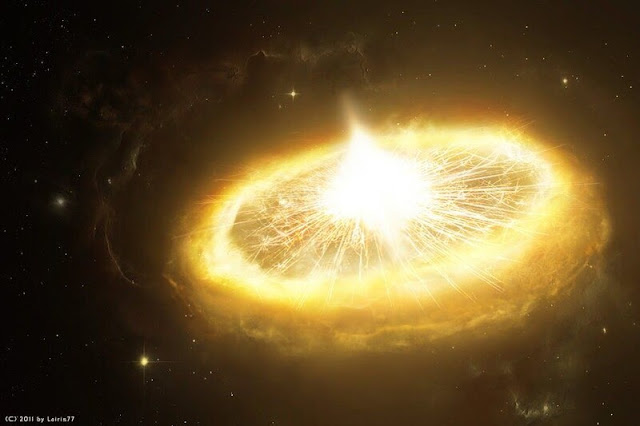Astronomers are puzzled by an object that is billions of light years away, emitting a dazzling brightness that exceeds the known energy limits of physics. This brilliant phenomenon is believed to be a massive ball of hot gas, outshining hundreds of billions of suns. Despite several theories, scientists are yet to confirm its true nature.
One possibility that astronomers are exploring is that it could be a magnetar, an extremely rare type of supernova that defies the laws of physics. This could imply that the object is the most intense supernova ever observed by humans. However, further research and observations are required to confirm this hypothesis.
Astronomers are struggling to find the right words to describe an extremely luminous object. According to Krzysztof Stanek, a professor of astronomy at Ohio State University and co-principal investigator of the team studying the object, "If it really is a magnetar, it's as if nature took everything we know about magnetars and turned it up to 11." This statement humorously suggests that the object's properties exceed the scale of 1 to 10.
The object was first detected by the All Sky Automated Survey of Supernovae (ASAS-SN), a network of telescopes designed to detect bright objects in the universe. Despite its incredible brightness, the object cannot be seen with the naked eye because it is 3.8 billion light years away.
ASAS-SN has discovered almost 250 supernovae since its inception in 2014. However, the discovery of ASASSN-15lh is noteworthy due to its extraordinary magnitude. It is 200 times more powerful than an average supernova, 570 billion times brighter than the sun, and 20 times brighter than all the stars in the Milky Way Galaxy combined.
Stanek, an astrophysicist at Ohio State University, explains that a supernova explosion releases a tremendous amount of energy, but the supernova remnant that remains after the explosion continues to emit radiation. According to Todd Thompson, a professor of astronomy at the same institution, there is a possible explanation for the brightness of the remnant. He suggests that the supernova may have generated a rare type of star known as a millisecond magnetar. These stars are highly dense and rapidly spinning, with an incredibly strong magnetic field.
The extreme nature of magnetars is highlighted by the fact that, to produce the observed level of brightness, this magnetar would need to rotate at least 1,000 times per second and convert all of its rotational energy into light with almost perfect efficiency. This magnetar is considered to be the most extreme example of a magnetar that is physically possible. As Stanek notes, such a high level of brightness requires a tremendous amount of energy, which must come from somewhere.
Thompson raised the question, "Will we ever see anything more luminous than this, given those constraints?" He then stated that if the object is indeed a magnetar, the answer is essentially no.
In an attempt to unravel this mystery, the Hubble Space Telescope will spend the next few months allowing astronomers to observe the host galaxy surrounding the object. It is possible that the team will discover that this bright object is located in the center of a large galaxy, indicating that it is not a magnetar at all. Instead, the gas surrounding the object could be evidence of a supermassive black hole.
If this is the case, the bright light could be attributed to a completely new type of event, according to study co-author Christopher Kochanek, a professor of astronomy at Ohio State University. Such an event has never been observed at the center of a galaxy before.
Regardless of whether it is a magnetar, a supermassive black hole, or something completely different, these findings are likely to prompt new ideas about how objects are formed in the universe.


Please do not enter any spam link in the comment box .